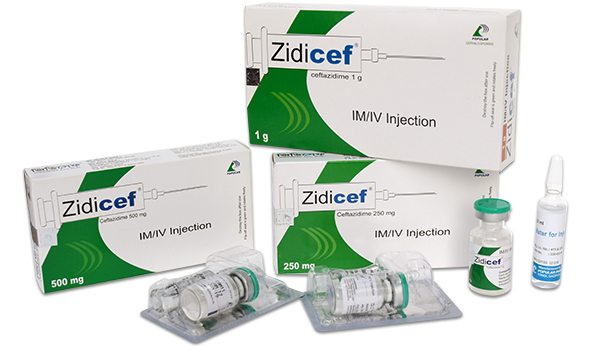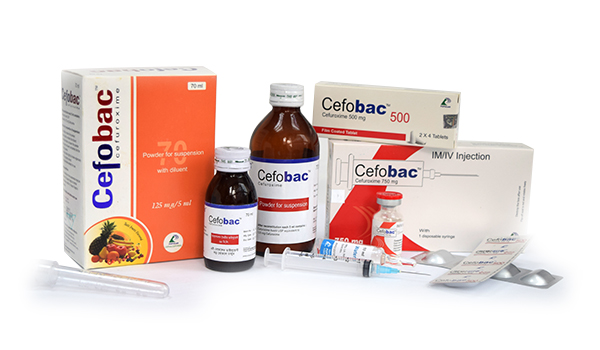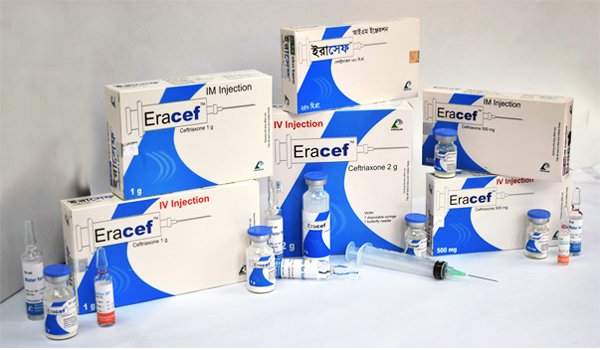Indication
It is indicated for the treatment of single infections and for mixed infections caused by two or more susceptible organisms. The more common indications are as follows Severe infections in general: Septicemia, bacteremia, peritonitis, meningitis, infections in immunosuppressed patients with hematological or solid malignancies and in patients with cystic fibrosis. Respiratory tract infections: Pneumonia, bronchopneumonia, infected pleurisy, empyema, lung abscess, infected bronchiectasis, bronchitis and in lung infections in patients with cystic fibrosis. Ear, nose and throat infections: Otitis media, malignant otitis externa, mastoiditis, sinusitis and other severe ear and throat infections. Urinary tract infections: Acute and chronic pyelonephritis, pyelitis, prostatitis, cystitis, bacterial urethritis, renal abscess, and infections associated with bladder and renal stones. Skin and soft tissue infections: Erysipelas, abscesses, cellulitis, infected burns and wounds, mastitis, skin ulcers. Gastrointestinal, biliary and abdominal infections: Cholangitis, cholecystitis, empyema of gall bladder, intra-abdominal abscesses, peritonitis, diverticulitis, enterocolitis, post-partum and pelvic inflammatory conditions. Bone and joint infections: Osteitis, osteomyelitis, septic arthritis, infected bursitis. Gynecologic infections: Endometritis, pelvic cellulitis and other infections of the female genital tract Gastrointestinal, billary and abdominal infections: Cholangitis, cholecystitis, emphysema of gall bladder, intra-abdominal abscesses, peritonitis, diverticulitis, ceterocolitis, post-partum pelvic inflammatory conditions. Ceftazidime, because of its broad antibacterial spectrum, may be used alone as first choice of drug. When appropriate, however, it may be used safely in combination with an Aminoglycoside or other beta-lactum antibiotic, for example in the presence of severe neutropenia, or with an antibiotic active against anaerobes when the presence of Bacteroides fragilis is suspected.
Dosage & Administration
Dosage:
Adults: Average dose: 500 mg IV/IM, 8 - 12 hourly; Total daily dose: 1 - 6 g Infants (>2 months) & children: 30-100 mg/kg/day (Bid); maximum 150 mg/kg/day. Neonates up to 2 months of age: 25-60 mg/kg/day (Bid). In case of meningitis or immunocompromised patients, IV route is recommended for children. More specific doses are - Uncomplicated & complicated UTI - 250-500 mg every 8-12 hours. Bone and joint infections - 2 g every 12 hours. Pneumonia - 500 mg - 1 g every 8 hours. Intra abdominal infections - 2 g every 8 hours, Serious gynecologic infections - 2 g every 8 hours. Meningitis - 2 g every 8 hours. Surgical prophylaxis: 1 g at induction of anaesthesia in prostatic surgery, repeated if necessary when cather is removed.
Administration:
Zidicef® may be given intravenously (IV) or by deep intramuscular (IM) injection into a large muscle mass, such as, the upper outer quadrant of the gluteus maximus or lateral part of the thigh. For IM administration, Zidicef® should be reconstituted with WFI as directed in the table headed by 'Preparation of solution'. Then it should be injected through following the 'Instructions for reconstitution' given below. For IV administration, Zidicef® should be reconstituted with WFI as directed and should be injected slowly into the vein over a period of 3 to 5 minutes.
Instructions for reconstitution :
1. Inject WFI and shake well to dissolve. The vials may contain a vacuum to assist
injection of WFI.
2. Carbon dioxide is released as the antibiotic dissolves, generating pressure
within the vial. The solution will become clear within 1 to 2 minutes.
3. Invert the vial, insert needle into it and withdraw contents of the vial in the usual
manner.
4. The withdrawn solution may contain Carbon dioxide bubble, which should be
expelled from the syringe before administration.
Preparation of solution :
| Strength | Route of administration | WFI to be added (ml) |
250 mg |
IM | 1.0 |
| IV | 2.5 | |
| 500 mg |
IM | 1.5 |
| IV | 5.0 | |
| 1 g |
IM | 3.0 |
| IV | 10.0 |
Precautions
Cephalosporin antibiotics at high dose should be given with caution to patients receiving concurrent treatment with nephrotoxic drugs, e.g. Aminoglycoside antibiotics or potent diuretics, such as, Furosemide. Avoid intramuscular injection with Lidocaine in patients hypersensitive to Lidocaine, or repeated injections in patients with hepatic dysfunction. Consider dosage modification in patients with renal impairment. There is no experimental evidence of embryopathic or teratogenic effect attributable to Ceftazidime but like other drugs it should be administered with caution during the early months of pregnancy. Ceftazidime is excreted in milk in less
concentration.





